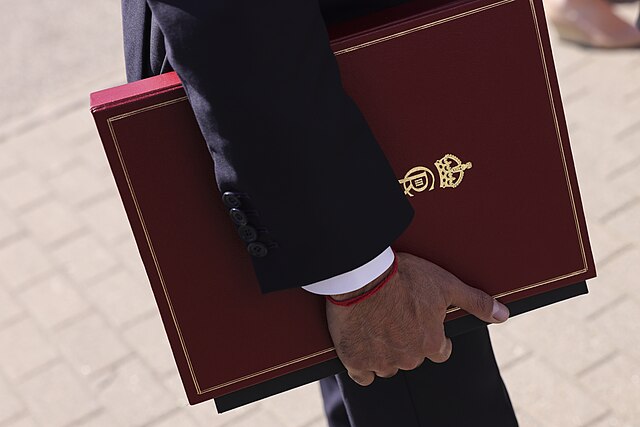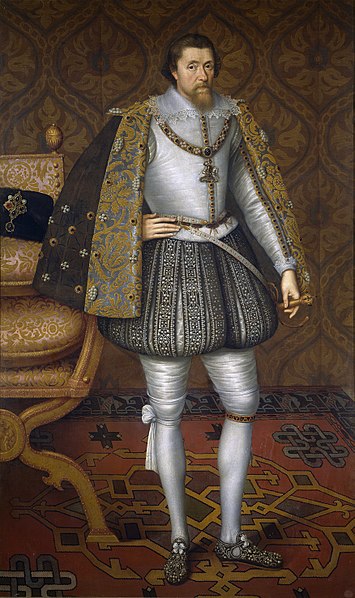Edward III, also known as Edward of Windsor before his accession, was King of England from January 1327 until his death in 1377. He is noted for his military success and for restoring royal authority after the disastrous and unorthodox reign of his father, Edward II. Edward III transformed the Kingdom of England into one of the most formidable military powers in Europe. His fifty-year reign is one of the longest in English history, and saw vital developments in legislation and government, in particular the evolution of the English Parliament, as well as the ravages of the Black Death. He outlived his eldest son, Edward the Black Prince, and was succeeded by his grandson, Richard II.
Drawing as head of the Order of the Garter, c. 1430 – 1440 in the Bruges Garter Book
To mark his claim to the French crown, Edward quartered the arms of France, placing them in the first and fourth quarters. English stained glass, c. 1350 – 1377.
Groat featuring Edward III
Edward III counting the dead on the battlefield of Crécy
Monarchy of the United Kingdom
The monarchy of the United Kingdom, commonly referred to as the British monarchy, is the form of government used by the United Kingdom by which a hereditary monarch reigns as the head of state, with their powers regulated by the British Constitution. The term may also refer to the role of the royal family within the UK's broader political structure. The current monarch is King Charles III, who ascended the throne on 8 September 2022, upon the death of his mother, Queen Elizabeth II.
Monarchy of the United Kingdom
Ministerial folder with the monarch's emblem
The English Bill of Rights of 1689 curtailed the sovereign's governmental power.
In 1603 James VI and I became the first monarch to rule over England, Scotland, and Ireland together.








